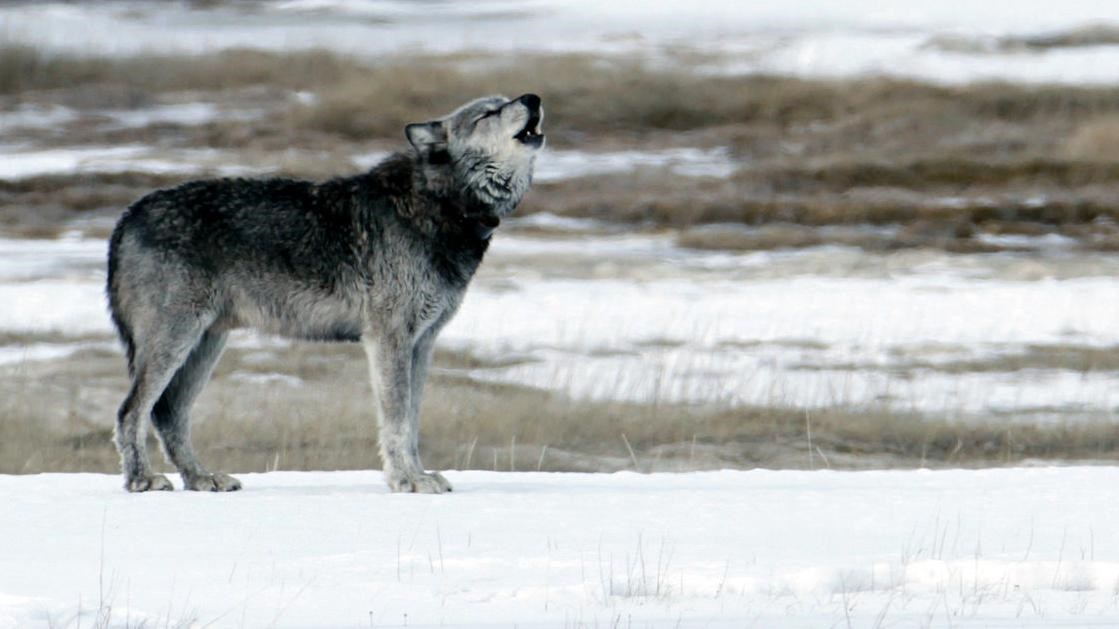
NPS Considered an agricultural or garden pest in many parts of the country, the white-tailed jackrabbit (Lepus townsendii) found a niche in Yellowstone. Most of the park is too forested or accumulates too much snow to provide suitable habitat, but in lower elevation areas of the northern range it can feed on sagebrush, rabbitbrush, and other shrubs during the winter. The jackrabbit is preyed upon by bobcats, coyotes, wolves, eagles, hawks, and owls in the park, but perhaps because of its limited distribution, it does not appear to provide a significant source of food for these species. 
Number in YellowstoneCommon in suitable low elevation habitats in the park. Where to SeeElevations below 6,500 feet from the Blacktail Plateau to Mammoth to the Gardiner Basin area. Identification
Habitat
Behavior
DescriptionDespite its common name, the jackrabbit is more closely related to other hares than to rabbits (Sylvilagus spp.) Like the much smaller snowshoe hare (L. americanus), which resides in Yellowstone’s coniferous forests, the jackrabbit has a grayish-brown summer coat that turns nearly white to provide winter camouflage in areas with persistent snow cover. The slightly smaller black-tailed jackrabbit (L. californicus), which is found in lower elevation areas, has not been documented in the park and is generally less common in greater Yellowstone. PopulationNearly all of the 501 jackrabbit observations recorded in 2008 and spottier records prior to that were made in sagebrush-grassland habitat at elevations below 6,500 feet (2,000 m) where the average annual precipitation is less than 16 inches (40 cm). Less than 1% of the park (about 18,700 acres) is located in these areas. In Yellowstone National Park, jackrabbits currently occupy the area from the Gardiner Basin south to Mammoth Hot Springs and east to the Blacktail Plateau. Review of the historical record indicates that jackrabbits used to also occupy the slopes of Mount Washburn and the lower elevations of the Lamar Valley. However, there have been no known observations of jackrabbits east of the Blacktail Plateau since the early 1950s. Jackrabbits are found as high as 14,600 feet (4,200 m) in Colorado, but a limiting factor in Yellowstone appears to be snow, which begins to accumulate earlier in the winter, attains greater depths, and lasts later into spring with increasing elevation. 
Mammals
Home to the largest concentration of mammals in the lower 48 states. ResourcesGunther, K.A., R.A. Renkin, J.C. Halfpenny, S.M. Gunther, T. Davis, P. Schullery, and L. Whittlesey. 2009. Presence and distribution of white-tailed jackrabbits in Yellowstone National Park. Yellowstone Science 17(1): 24–32. Barnosky, E.H. 1994. Ecosystem dynamics through the past 2000 years as revealed by fossil mammals from Lamar Cave in Yellowstone National Park. Historical Biology 8:71–90. Lim, B.K. 1987. Lepus townsendii. Mammalian Species 288:1–6. Streubel, D. 1989. Small mammals of the Yellowstone ecosystem. Boulder, CO: Roberts Rinehart. |
Last updated: April 18, 2025
